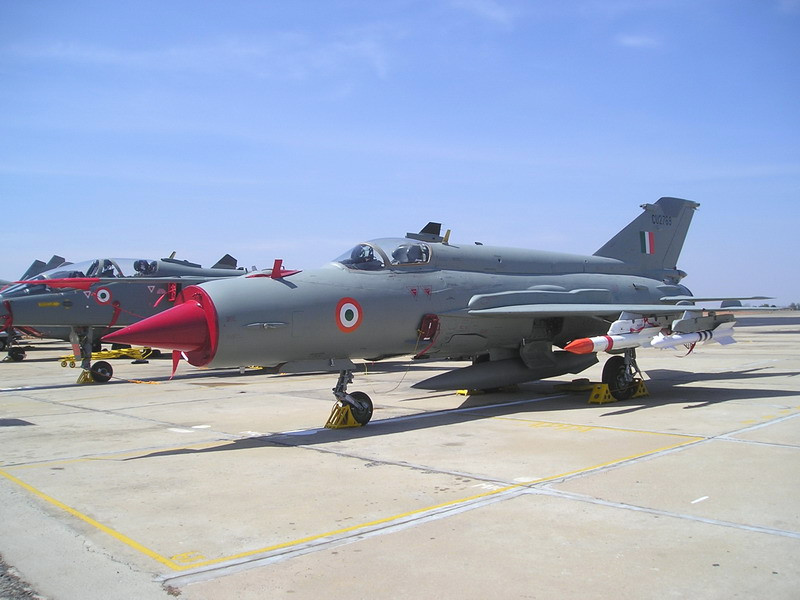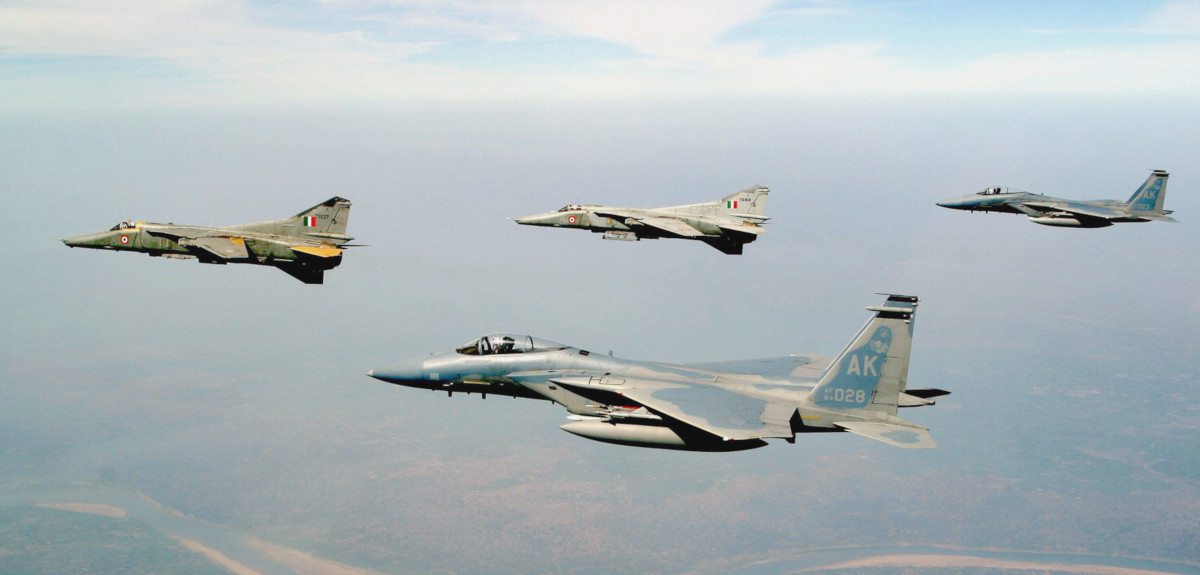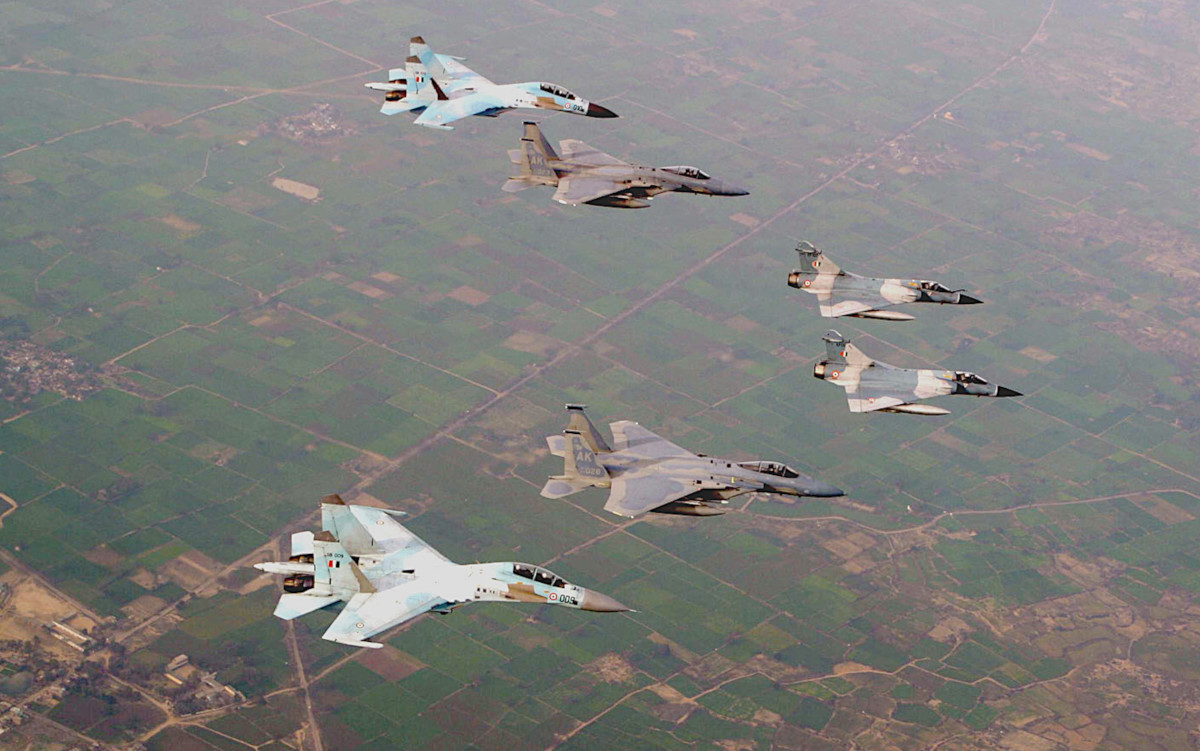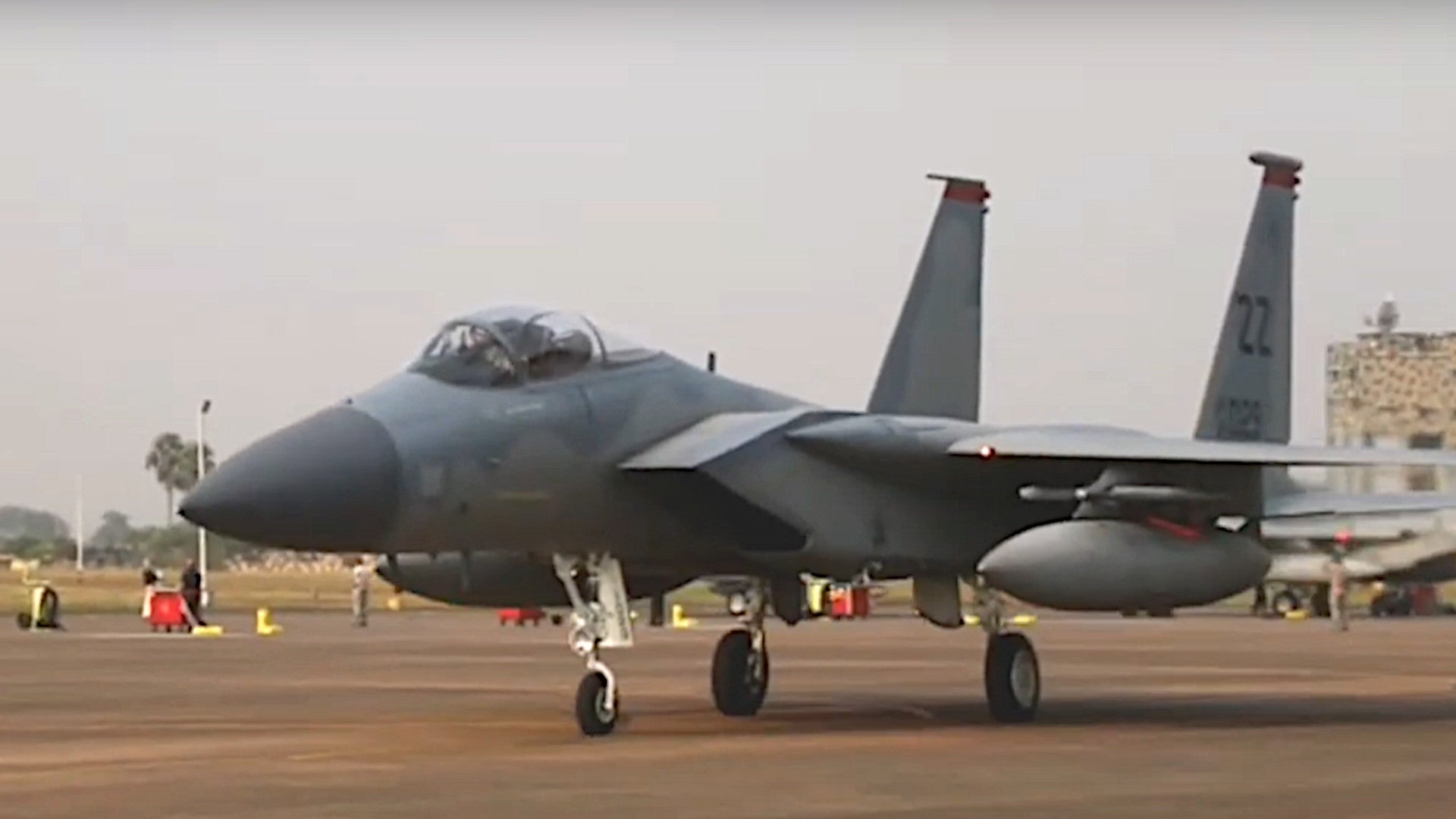The U.S. and Indian Air Forces have kicked off an important bilateral air warfare exercise known as Cope India. This is the first iteration of this drill in nearly a decade and comes as the two countries are working to expand defense and security cooperation in the face of regional security challenges and threats, especially with regards to China.
Cope India 2019 began on Nov. 3, 2018, at Air Station Kalaikunda and Air Station Arjan Singh, both of which are in India’s eastern West Bengal state, with approximately 200 Americans and an unspecified number of Indian personnel taking part in the exercise. U.S. Air Force personnel from the 18th Wing in Japan has brought F-15C/D Eagle fighter jets for the drill, while the Illinois National Air National Guard’s 182nd Airlift Wing will contribute C-130 Hercules cargo planes. Indian Air Force (IAF) Su-30MKI Flanker-H and Mirage 2000 fighter jets, Jaguar combat jets, A-50EI airborne early warning and control aircraft, and C-130Js will be flying, as well.
“We are excited and grateful for the opportunity to fly and train with our Indian Air Force counterparts within their home country,” U.S. Air Force Colonel Darryl Insley, commander of the 13th Air Expeditionary Group, said in an official statement. “Through participation in Cope India, I’m confident that all Airmen involved will both increase their skills and build meaningful bonds through bilateral engagements and exchanges.”
The 13th Air Expeditionary Group is a provisional unit that the Air Force can activate as necessary to control forces deployed for exercises and other contingencies. Officially, Cope India will focus on developing the two countries’ air warfare tactics, techniques, and procedures, as well as sharing best practices related to force employment and otherwise helping both countries build on their existing capabilities.

Pilots flying the F-15C/Ds will have a prime opportunity to train against dissimilar aircraft flown by their Indian counterparts. Flying air-to-air drills with the Russian-made Su-30MKIs are especially valuable given the continued use of Flankers and Flanker derivatives among the United States’ two potential “great power adversaries, Russia and China. Various iterations of the Flanker are also in service with smaller air forces around the world.
Having a chance to train to operate together those aircraft, as well as the others that the IAF will be flying during Cope India, is also important if the United State and India hope to be able to deploy and fly together in response to any sort of contingency. This applies equally to the C-130 crews, who could easily find themselves working side-by-side in response to violent crises or humanitarian disasters in the Pacific region or even further afield. India’s Su-30s feature 3D thrust vectoring, making them a particularly unique challenge for F-15C/D pilots when fighting within-visual-range under certain circumstances.
The Air Force is hardly unaware of the value of having a regular bilateral exercise with the Indians. The service had held five other Cope India exercises between 2003 and 2009.
The 2004 drill is particularly infamous in that the IAF’s upgraded MiG-21s, known as Bisons, notably carrying Israeli-made Elbit EL/L8222 self-escort jamming pods, were able to repeatedly get the drop on American F-15C/Ds. The improved Soviet-era jets also had the benefit of a small radar cross section and helmet mounted sights that allowed them to fire high-off boresight short-range infrared-seeking dogfighting missiles at the most opportune times.
“The MiG-21s would be embedded with a [MiG-27] Flogger for integral protection. There was a data link between the [Su-30MKI] Flankers that was used to pass information,” U.S. Air Force Colonel Greg Newbech, who took part in the 2004 iteration of the exercise, said afterward. “They built a very good [radar] picture of what we were doing and were able to make good decisions about when to roll [their aircraft] in and out.”

Retired U.S. Air Force Major General Michael Snodgrass, then a colonel commanding the 3rd Wing at Elmendorf Air Force Base in Alaska, which had sent jets to take part in the exercise, said that the Bisons and the Su-30MKIs proved to be the most formidable opponents. “The outcome of the exercise boils down to [the fact that] they ran tactics that were more advanced than we expected… They could come up with a game plan, but if it wasn’t working they would call an audible and change [tactics in flight],” he explained in a 2004 interview with Aviation Week & Space Technology.
It is important to note that none of the Eagles had received the AN/APG-63V3 active-electronically scanned array radars at the time. In addition, the Air Force had reportedly agreed not to simulate engagements using certain beyond-visual-range missile parameters and had fought at a significant numerical disadvantage in most cases.

Still, the exercise’s results prompted an uproar in Washington. The United States returned for the 2005 iteration of the drill with improved tactics and procedures, but the outcome still featured notable Indian successes. It reportedly became an argument in some defense circles for restarting production of the F-22 Raptor stealth fighter and helped spur the fielding of the Joint Helmet Mounted Cueing System (JHMCS) and AN/APG-63(V)3 AESA radar. It helped inform later upgrades, some of which are still in the pipeline, such as infrared search and track (IRST) pods, too.
The U.S. Air Force returned to India again for the exercises in 2006 and 2009. The latter of these drills, however, was entirely airlift focused, involving only American C-130s and C-17s.
It’s not immediately apparent why the exercises came to an end. However, U.S.-India defense relations began to grow again during President Barack Obama’s second term, marked in particular by greater defense industrial cooperation.
President Donald Trump’s administration has made an even stronger push to expand military-to-military ties with Asia’s largest democracy. In 2017, the Pentagon announced plans to reboot Cope India, and expand the size and scope of bilateral military exercises in general, as part of that overall effort. In May 2018, the United States renamed Pacific Command (PACOM) as Indo-Pacific Command (INDOPACOM), in part to highlight the importance of this relationship.

This makes good sense as the United States and India have a number of shared regional and global security concerns, including the threat of international terrorism, piracy, and an uptick in severe natural disasters linked to global climate change. India is a major partner in working to support the government in Afghanistan in reaching a conclusion to its civil conflict and addressing the threat of Pakistan-based militant groups.
Both the U.S. and Indian governments are also concerned about expanding Chinese political, economic, and military influence in the Pacific region and elsewhere around the world and oppose many of China’s controversial territorial claims, including in the South China Sea. Cope India 2019 “showcases U.S. and India’s efforts and commitment to a free and open Indo-Pacific region,” the Air Force said in an official statement about the exercise, almost certainly a veiled reference to China’s increasingly assertive foreign policy.
With all this in mind, it seems highly likely that the already storied Cope India exercise will once again become a key feature of U.S.-Indian military cooperation.
Contact the author: jtrevithickpr@gmail.com
